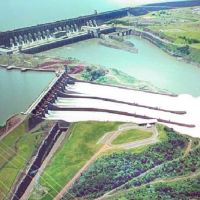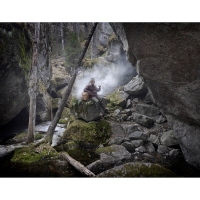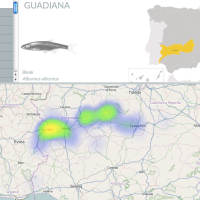Artificial lighting along banks of rivers and lakes alters riparian ecology
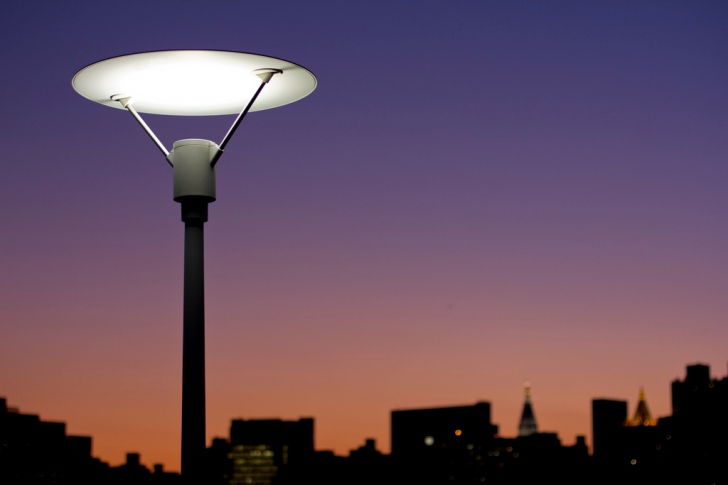
Street lamps can alter insect communities along the banks of rivers and lakes. Image: John | Flickr Creative Commons
Artificial lighting beside rivers and lakes can significantly alter the dynamics of aquatic insect populations and their predators, according to a new study. The findings of a new open-access paper published in Frontiers in Environmental Science show how nocturnal lighting along waterways attracts large numbers of insects, which in turn attracts predators such as spiders.
“Artificial lighting at night-time is a major component of global environmental change and a threat to biodiversity,” explains lead author Alessandro Manfrin, a researcher at the Leibniz-Institute of Freshwater Ecology and Inland Fisheries (IGB) and now the Environmental Campus Birkenfeld, University of Applied Sciences Trier. “This is particularly true near rivers and lakes, where human populations are concentrated.”
The researchers suggest that artificial night-time lighting is increasing worldwide at a rate of approximately 3-6% a year. Recent studies (here, here and here, for example) have documented how increasing light pollution can affect ecosystems, particularly in how it might disrupt the daily and seasonal rhythms – such as hibernation, reproduction and hunting – of animal lives.
Artificial lights along the edges of rivers and lakes (in what is often termed the ‘riparian zone‘) thus have the potential to alter the interactions between aquatic and terrestrial ecosystems. In part, this is important because ecological science and policy is increasingly focused on these interactions through ‘landscape scale‘ and ‘catchment based‘ approaches to research and management.
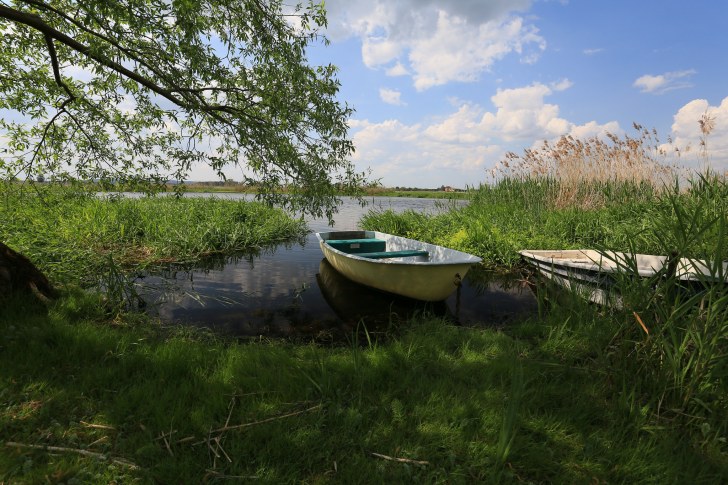
Westhavelland Nature Park in north-east Germany – the Dark Sky Reserve where the study was undertaken. Image: Pascal Volk | Flickr Creative Commons
Identifying the ecological effects of light pollution in ecosystems affected by numerous other pressures is difficult. Urban ecosystems where artificial lighting is common are often subject to multiple pressures including habitat loss, nutrient pollution and water abstraction.
In order to isolate the effects of light pollution, Manfrin and colleagues set up an experimental series of street lamps beside two different drainage ditches in a nature reserve in north-east Germany. The Westhavelland Nature Park is one of the least illuminated areas in Germany, and is located within a 750-km2 International Dark Sky Reserve.
The street lamps along one ditch were turned on each night, whilst the lamps along the other were permanently left switched off. Over a two-year period, the researchers used traps to identify the types of insects and other invertebrates present along each ditch. The research team found that there were significantly higher numbers of insects at the artificially illuminated ditch than the one left in darkness.
Insects arrived in two main ways. First, more aquatic insects left the water in the illuminated ditch. The researchers suggest that this may be because the lights made it easier for larger fish to hunt and eat smaller fish that normally prey on insects, allowing more insects to survive.
Second, the illuminated lamps attracted large numbers of flying insects, compared with the lamps that were switched off. The swarms of insects at the illuminated ditches attracted predator species to the grass around the lamp posts. “The abundance of several nocturnal spiders increased at the illuminated bank, and their activity was extended into the day,” says Manfrin. However, the abundance of nocturnal ground beetles decreased at the illuminated ditches.
Artificial lighting is increasingly common along the banks of freshwater ecosystems across the world. This new study adds to a growing body of evidence on how artificial illumination can affect ecosystems on the edge of water and land,
“We showed that artificial light affects insect behaviour, and that this has the potential to change ecosystem dynamics,” says Manfrin. “It is important to account for potential ecological impacts when designing new lighting concepts, and these and other similar results should be considered by landscape and urban planners, lighting engineers, and terrestrial and aquatic ecologists.”






